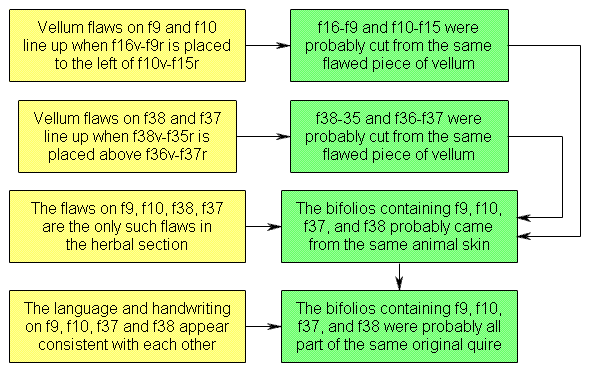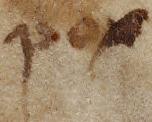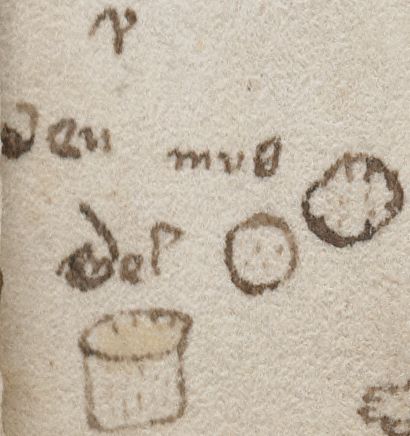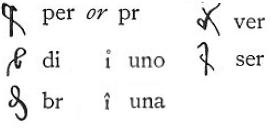That man Tony Gaffney has been at it again, shooting yet another cryptographic tin can down off Giovan Battista Bellaso’s fence: this time, it was Bellaso’s 1564 challenge cipher #7’s turn to fall.
What was particularly sweet about #7 was that it was a completely different type of cipher to the others Tony had previously broken: rather than being some kind of reciprocal rotating cipher (i.e. reciprocal = a cipher that both encodes and decodes, and rotating = a cipher alphabet whose order rotates every letter, every plaintext word, or every ciphertext word), this one was a fairly fiendish digram table (i.e. a table of pairs of letters).
Of course, you’d need a really substantial piece of ciphertext to stand any chance of filling out the contents of any such table: but because Bellaso wasn’t that sadistic, he used the same table he included in his book. The difficulty was therefore not so much of reconstructing the table, but of reconstructing the ksyphrase driving the table (i.e., the phrase permuting the rows and columns).
As regular Cipher Mysteries readers should know by know, classical (i.e. puzzle-based rather than statistics-based) code-breakers such as Tony look for words in the ciphertext with unusual properties, and see if they can use those to lever their way in. Here, the fact that nearly every word has an even number of letters is a strong indication that this is a digram-based cipher: and in Bellaso’s table (where each row of digrams is horizontally offset by one place relative to the row above it) the group CMYLDLELRL in line 4 of the ciphertext would appear to fall mostly along a diagonal.
Assuming that Y was “unlikely to be in the keyword or in the message“, Tony then “compared each of the 10 digrams in its row with those in their diagonals” – this let him hunt for candidate words to fit this basic kind of consonant-vowel-consonant pattern. “cifra” matched the first three pairs; “fantasie” matched the first four pairs; but by far the best 5-digram match for the group was “altramente“.
“This gave me a few rows and columns – the rest was a lot of trial & error & cups of tea & cigarettes!”
Post-caffeine and post-tobacco, here’s the resulting Italian cleartext that Tony ended up with – it appears to be explaining how to aim your cannon so that it hits the target:-
serom pera ilfestcon doi sopresetireve c onlavite perpe tova ilcanone QMOSDAHSOM CULRMENEESFMBT QUXRQBRHORRGIA NTEECFTLRL HSXOIARETT CUNOEGED postoasegnn ousire delapaia faretirar e ilchanoneil quale sedeveretirar HDXMPTQMXGES TBQEOE FOCFHUBG LAOERMOMODIACUNSEOEEIOCDMDCMIA QMFOTOOERMOMOD inproporti onesetutiri inalto stsognache nel retirasecali chonlacoda EMXRHLOTRM EEQBRHRRORBF EMCMRE MUQUXGNGSB EDCROERMOMQMNOCH NSEECFNEFT altramente dariaeo to d alsegnosetutirai baso bis na* elacoda retiran do CMYLDLELRL FTOUPEGURE FRCMQMXGQRRHRRORPU ALQU AEQCECYECENGFBPL OERMOMEB FM siassen ?da viran doperdrito bisognaseretiripesdritto etintutitreiquesuicasi QEQHQMESTFT TLOMESFMHSZBOURE AEQUXGQHOARHORHOQBXFRBRE RHEMRURMYLBUMDQBTLNOQE leretebisognache sesttiri noequal menteperchhe calan dounarotada rialap CGOERLAEQUXGNGSB QMMURMOU EGMRPOCDDFYHHTOANSSB NOCFESFMEUOBRAFFPLOUCMHR ladaquellaban da CFFTMDCECFALESFT
* YE = Il Signor Iddie, “The Lord God” (as per the table below – so almost certainly an error)
? An odd number of letters in this group (so almost certainly a typesetting error).
If you then insert plausible-looking spaces, you end up with text looking like this:-
Se rompera il fest con doi sopre se tireve con la vite perpetoua il canone posto a segnn ousire della paia fare tirare il chanone il quale se devere tirar in proportione se tutiri in alto st sogna che nel retira se cali chon la coda altramente dariaeo to d'al segno se tutirai baso bis na ? el a coda retiran do si assen ? da virando per drito bisogna se retire pes dritto et intuit tre I que sui casi le rete bisogna che sesttiri no equalmente perchhe calando una rota dari alap lada quella banda
As you can see from the final table (below), the keyphrase driving the row and column permutations appears to be “BARTOLOMEUS / PAN FILIUS”.
B A R T O L M E U S C D F G H P pb pa pr pt po pl pm pe pu ps pc pd pf pg Ph aa ea ia oa ua A aa ae ai ao au A accio altra ancore A ah ab aa ar at ao al am ae au as ac ad af ag ab eb ib ob ub B ba be bi bo bu B benche che che N ng nh nb na nr nt no nl nm ne nu ns nc nd nf ac ec ic oc uc C ca ce ci co cu Ch cosa como della F ff fg fh fb fa fr ft fo fl fm fe fu fs fc fd ad ed id od ud D da de di do du D debba detto doppe I id if ig ih ib ia ir it io il im ie iu is ic ae ee ie oe ue E ea ee ei eo eu E esso essendo essere L lc ld lf lg lh lb la lr lt lo ll lm le lu ls af ef if of uf F fa fe fi fo fu F forsi fusse finche U us uc ud uf ug uh ub ua ur ut uo ul um ue uu ag eg ig og ug G ga ge gi go gu G gratia grave grato S su ss sc sd sf sg sh sb sa sr st so sl sm se ah eh ih oh uh H ha he hi ho hu H abaiamo avunto hanno B be bu bs bc bd bf bg bh bb ba br bt bo bl bm ai ei ii oi ui I ia ie ii io iu I imperio impo impoche C cm ce cu cs cc cd cf cg ch cb ca cr ct co cl al el il ol ul L la le li lo lu L leqli liquali lettera D DL dm de du ds dc dd df dg dh db da dr dt do am em im om um M ma me mi mo mu M molto modo mondo E eo EL em ee eu es ec ed ef eg eh eb ea er et an en in on un N na ne ni no nu N non nostra nella G gt go gl gm ge gu gs gc gd gf gg gh gb ga gr ao eo io oo uo O oa oe oi oo ou O oltra ogni ognicosa H hr ht ho hl hm he hu hs hc hd hf hg hh hb ha ap ep ip op up P pa pe pi po pu P per pero perche M ma mr mt mo ml mm me mu ms mc md mf mg mh mb aq eq iq oq uq Q st st st st qu Q quali quella questa O ob oa or ot oo ol om oe ou os oc od of og oh ar er ir or ur R ra re ri ro ru R quato quando qualche Q qh qb qa qr qt qo ql qm qe qu qs qc qd qf qg as es is os us S sa se si so su S signor signoria scritto R rg rh rb ra rr rt ro RL rm re ru rs rc rd rf at et it ot ut T ta te ti to tu T scrisse tutto tanto T tf tg th tb ta tr tt to tl tm te tu ts tc td au eu iu ou uu V ua ue iu uo uu V vostro vero una X xd xf xg xh xb xa xr xt xo xl xm xe xu xs xc br dr gn lt nq X pr rl rp rt st X vostra le vostra lquate piu Sig lettere presto Y yc yd yf yg yh yb ya yr yt yo YL ym ye yu ys ch fr gr mn nt Y rc rm rs sc tr Y Il Signor Le cose Me Iddio passano racemande Z zs zc zd zf zg zh zb za zr zt zo zl zm ze zu cr gl lm nc pn Z rd rn rt sp tr Z habiamo havemo fatime recevute apiacer raccom.
All in all, I think this was another excellent result for Tony G., cracking an altogether harder challenge cipher than the previous ones – classy stuff, very well done! 🙂








